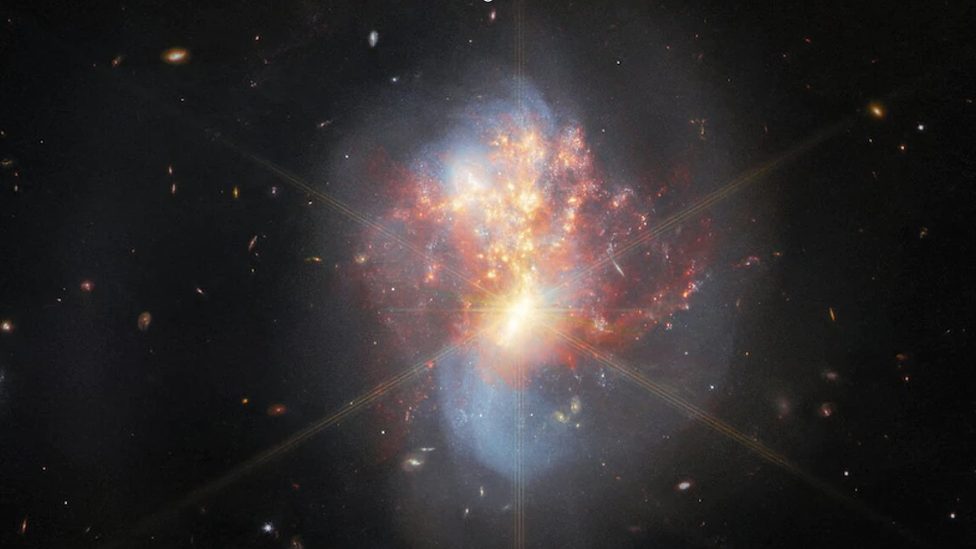James Webb Space Telescope: Nasa captures image of two galaxies merging
- Published
- comments

The super-powerful James Webb Space Telescope continues to reveal images never seen before.
Nasa says that this latest discovery of two galaxies colliding into one another, known as a "galaxy merger", will help astronomers unravel the complex interactions in galactic ecosystems.
The image shows the galaxies combining more than 270 million light-years away, which begins a frenzy of star formation known as a starburst.
The James Webb Space Telescope is the largest ever - its mission is to explore the vast reaches of space and 'go back in time' to discover the earliest stars of the Universe
Supermassive black hole
Nasa says this starburst "creates new stars at a rate more than 20 times that of the Milky Way galaxy", releasing intense infrared emissions.
The US space agency thinks it "may well be in the process of forming a supermassive black hole".
And because this system, known as IC 1623, is particularly bright - thanks to the infrared wavelengths it emits - it makes it that bit easier for the space telescope to capture.
Black holes are formed when a dying star collapses inward under the pressure of its own weight. This leads to something called a supernova, a star's extremely powerful explosion.
Black holes are places in space where the pull of gravity is so strong that even light can't escape it! This is what makes them invisible.
Supermassive black holes are millions, or sometimes even billions the size of our Sun. Astronomers believe they can be found at the centre of all large galaxies, including our own: The Milky Way.
Quasars are incredibly bright objects in space powered by black holes which give off large amounts of light and energy.
James Webb is the world's largest space telescope. It is ultra modern and super-sensitive to infrared waves!
Equipped with a Mid-InfraRed Instrument (MIRI), the Near-InfraRed Spectograph (NIRISpec) and the Near-InfraRed Camera (NIRCam), James Webb can capture images at high resolution, giving more data for astronomers to study.
The James Webb Space Telescope was launched with one clear mission mission - to show the first stars to light up the Universe - thought to have formed between 100 and 200 millions years ago.
Before its launch on Christmas Day in 2021, such images would be too difficult to capture.
Since that time it has beamed some of the most incredible images of the stars back to Earth for experts to study.
With a 10 year life-span, it's hoped that this latest discovery is just one of many, many more still to come in the exploration of the universe.
- Published20 April 2022
- Published25 January 2022
- Published6 May 2020
